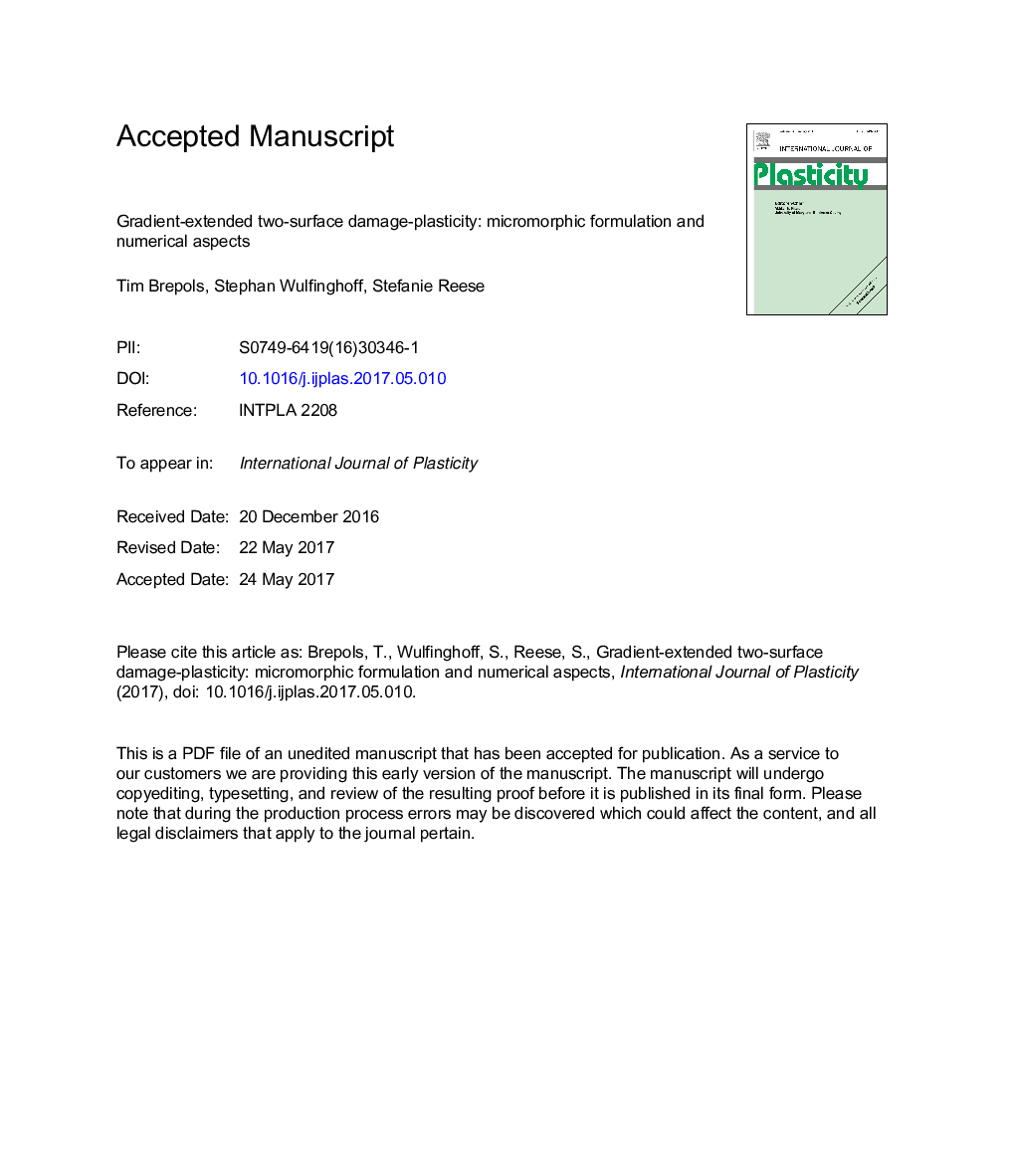| Article ID | Journal | Published Year | Pages | File Type |
|---|---|---|---|---|
| 5016733 | International Journal of Plasticity | 2017 | 96 Pages |
Abstract
A regularized gradient-extended damage-plasticity model is discussed which is based on a micromorphic approach in the spirit of Forest (2009). Damage and plasticity are treated as independent but strongly coupled dissipative phenomena by means of a 'two-surface' formulation, i.e. by using separate yield and damage functions as well as appropriate loading/unloading conditions. By means of two independent dissipation potentials for plasticity and damage, thermodynamically consistent evolution equations are derived. The model accounts for nonlinear plastic as well as damage hardening. The models' implementation at the local integration point level, both using a local active set search strategy known from multisurface plasticity and a recent approach based on a reformulation of the model equations by means of the Fischer-Burmeister complementarity function, is discussed in detail. It is shown how the model can be implemented into finite elements and the four algorithmically consistent tangent operators are presented which are necessary to obtain quadratic convergence in a global Newton scheme. Various numerical benchmark tests performed in the study nicely indicate the model's ability to deliver mesh-independent results in coupled damage-plasticity finite element simulations.
Keywords
Related Topics
Physical Sciences and Engineering
Engineering
Mechanical Engineering
Authors
Tim Brepols, Stephan Wulfinghoff, Stefanie Reese,
